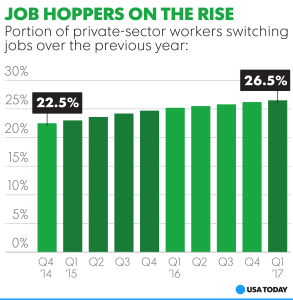 “I firmly believe that if your environment works for you and your family, it translates into a better life.” — Candice Olson
“I firmly believe that if your environment works for you and your family, it translates into a better life.” — Candice Olson
I once had a friend whose mother had advised her to only date a man if her life with him would be better than the life she would have without him. I was a little taken aback those many years ago that her mother would even suggest that it was someone else’s responsibility to make her life better. I have since changed my view a little bit. I do believe that there are people who hold certain positions whose responsibility it becomes to make peoples’ lives better. Leadership is one of those positions. So, as a leader, are your employees’ lives better because of you than they would be if you weren’t their leader?
Do they have your support?
When employees do not have the support of their leader it always feels like they are fighting an uphill battle. This battle never ends and it is exhausting. Exhaustion diminishes employees’ quality of life rather than enhancing it. Give them the support they need so the constant battle comes to an end.
Do they feel safe?
Everyone has the basic need to feel safe. As a leader, it is your responsibility to provide a consistent environment where employee know what to expect. Knowing what to expect provides a level of security. If employees work in a chaotic, inconsistent environment they can never feel at ease. Provide employees with a sense of safety so they can feel comfortable in their work environment.
Can they trust you?
Lack of trust will overshadow every other step you take, as a leader, to improve the lives of your employees. Employees need to know that you are looking out for their best interests. Leadership is never about the leader and employees will quickly start to see through your façade into your hidden agendas. Make sure your words, actions, and intentions are authentic. Be transparent so that your employees never have a reason to question your motives.
Do you have respect for their lives?
It’s easy to become so focused on reaching organizational goals that you forget that your employees have lives outside of work. Their personal lives: families, friends, hobbies, and communities are just as important to them as their work lives. If you want employees to give 100% while they are in the workplace, you must provide them with ample opportunity to give 100% to their personal lives also. Everyone needs balance, even you.
Are you dedicated to serving them?
Leadership is about service, period. Your employees are not there to serve you; you are there to serve them. You can look at this as a blessing or a curse. If you see it as a curse you are in the wrong position. As a leader, you must provide guidance and support so that employees can be successful. Their success should be your main focus.
What Type of Work Environment are You Creating?
Are you creating a work environment where employees feel supported? Is there a consistency that gives them a sense of safety and security? Are you transparent and authentic so that employees have no reason to question if they can trust you or not? Do you have respect for their personal lives and the attention they need to give to matters outside of the workplace? Are you dedicated to serving your employees? These factors contribute to you, as a leader, giving your employees a better life. Is there any greater legacy you can leave than having made a positive impact on the quality of life of every employee that has worked with you?
What will you start doing today to improve the lives of your employees?
© 2017 Elizabeth Stincelli
Liz Stincelli is passionate about recognizing and inspiring the leader in each of us. She is the Founder of Stincelli Advisors where she focuses on helping organizations change attitudes, change communication dynamics, improve collaboration and problem-solving, engage employees, and strengthen organizational culture. Liz holds a Doctor of Management degree with an emphasis on organizational leadership.
Learn more about Liz by visiting her website, stincelliadvisors.com and connect with her on Twitter @infinitestin, Google+, and LinkedIn. You can contact her by email at stincelliadvisors@gmail.com.





